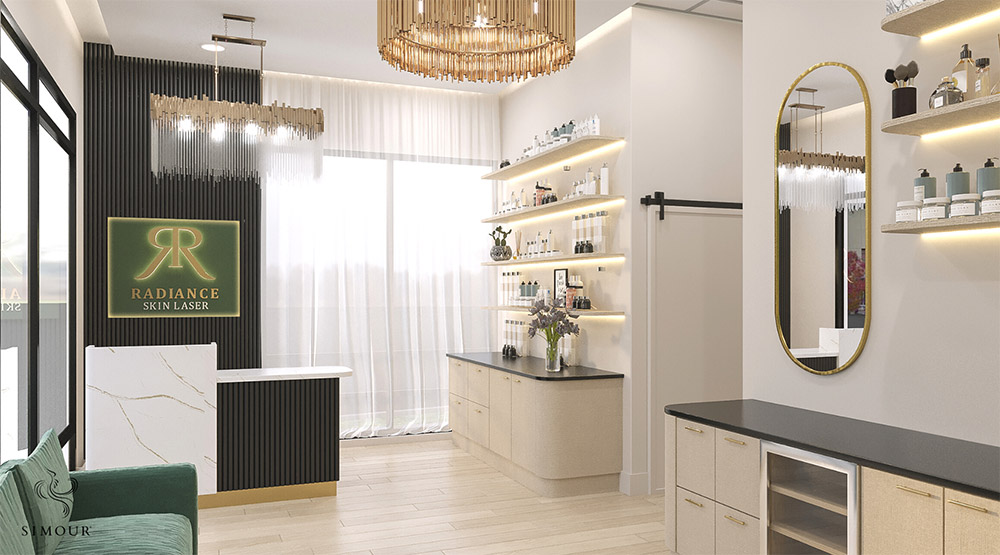“Price is what you pay. Value is what you get.” – Warren Buffet
When it comes to designing medical interiors, it’s important to prioritize functionality, efficiency, and patient comfort. However, achieving these goals doesn’t mean that you have to break the bank. Here are some cost-effective solutions for medical interior design that can help healthcare facilities create a safe, functional, and aesthetically pleasing environment without going over your budget.
1. Optimize space
Use space-saving furniture and storage solutions to make the most of the available space in your office. Built-in cabinets and shelving can be a great way to maximize storage while keeping the space looking tidy. Proper space planning can also maximize the use of available space and minimize the need for additional square footage. For example, you can use multipurpose rooms for exams and consultations or utilize underutilized areas for storage.
2. Use durable and easy-to-clean materials
Healthcare facilities need to be clean and sterile to prevent the spread of infection. Using durable and easy-to-clean materials such as vinyl flooring, antimicrobial paint, and solid surface countertops can reduce maintenance costs and improve patient safety. Putting a premium on durability ensures that you can have the interior design suitable to the task and will make the interior design last longer.
3. Incorporate natural light
Natural light can improve patient outcomes, reduce energy costs, and create a welcoming atmosphere. Maximizing the use of natural light sources like having large windows or even skylights can improve the overall mood and well-being of patients and staff. It can also help reduce lighting expenses and create a more pleasant environment overall.
4. Choose affordable furniture or even repurpose old ones
Selecting simple and affordable furniture can help reduce costs. It’s essential to consider the functionality, durability, and maintenance of the furniture. Repurposing existing furniture and décor can reduce costs not to mention prolong the life of stuff that you already own. For example, reupholstering chairs, refinishing tables, and repainting walls can transform the space without splurging unnecessarily, not to mention eco-friendly.
5. Utilize technology
Technology can be a cost-effective way to improve the functionality of your medical office. Adopting electronic health records can help reduce the need for paper storage and improve workflow. Consider incorporating electronic health records (EHRs) and telemedicine capabilities to streamline patient care and reduce administrative costs. physical space, staff, and equipment.
6. Consider modular design
Modular design allows for flexibility and easy rearrangement of furniture and equipment. This can be particularly useful in medical spaces that may need to be reconfigured often to accommodate changing needs of patients and staff alike.
7. Incorporate plants
Adding plants to your medical facility is an easy and affordable way to make meaningful improvements within the space. They create a calming and inviting atmosphere because it reminds viewers of the natural world in an indoor setting. Some plants also help purify the air, so aside from adding visual interest to a space, they can also improve air quality and reduce stress levels for patients and staff all around. Consider incorporating low-maintenance plants like succulents or ferns.
8. Implement wayfinding solutions
Clear and concise wayfinding solutions can help patients and visitors navigate the facility more easily, reducing the need for staff assistance and improving the overall patient experience.
9. Keep it simple
One way to save money on medical interior design is to keep things simple. Choose a minimalist design that incorporates only the essentials. Use neutral colors and simple patterns to create a clean and professional look.
By incorporating these cost-effective solutions into medical interior design, healthcare facilities can create a welcoming and functional environment that meets the needs of patients, staff, and visitors without spending unnecessarily. Remember that interior design is also an investment that must be kept reasonable to make good financial sense for your practice.
Working with our clients has given us sufficient insights to plan high-performing practices that deliver the best possible patient experience aligned with their business goals. Book a design consultation today so we can discuss how we can do the same for your practice as well. We can’t wait to hear from you soon, have a great day ahead!




